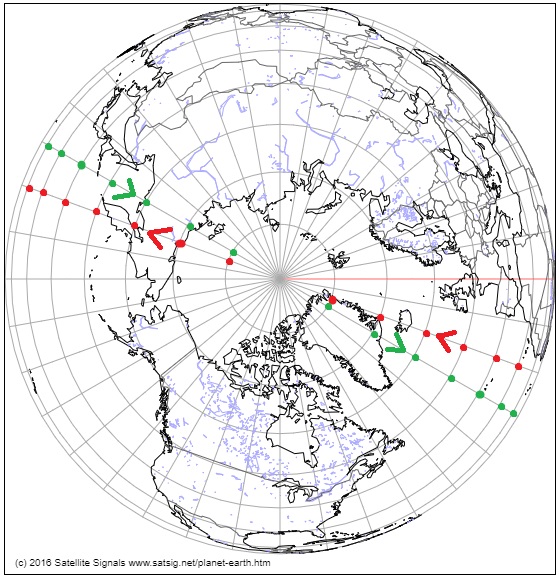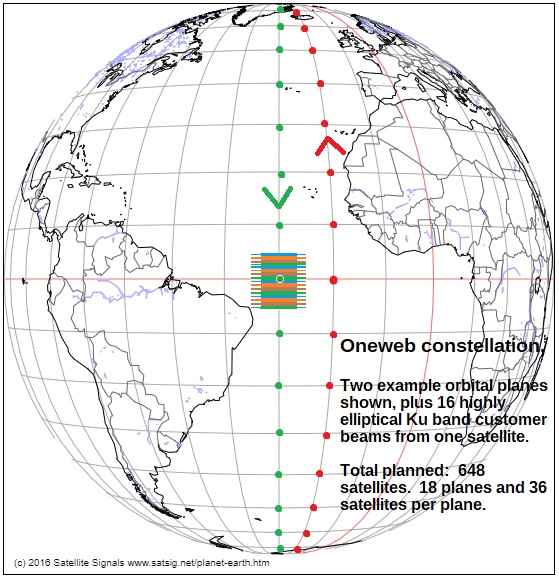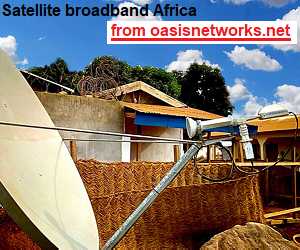OneWeb, the Low Earth Orbit (LEO) satellite communications company, has announced the successful launch of 36 satellites on 25th March 2021.
This brings its total in-orbit constellation to 146 satellites.
I've been investigating this system with interest.
The satellites will form part of OneWeb’s 648 LEO satellite LEO 1200km high constellation that will deliver high-speed, low-latency global connectivity.

Looking at the web suggests that the 648 satellites will be put into 18 near polar (87.4 deg inclination) orbital planes with 36 satellites per plane. At equator crossing each satellite will therefore cover a square area of 10 deg x 10 deg lat/long with 16 highly elliptical east-west orientated beams, stacked north south.

As far as I can work out this means that the 16 beams from the satellite must each be about 48 deg x 3 deg, which corresponds to the pictures of the satellites that show each antenna as a line of 36 patches, about 1m long.
In the trials of the service a pair of tracking antennas were used. Following a satellite as it moved north-south, the communications system switched from one beam to the next every 11 seconds with no interruption to service at all. Using the pair of tracking antennas, the second antenna picked up the next satellite and again transitioned, with no interruption to service, approx every 2.5 minutes.
Bit rates of 400 - 500 Mbit/s were achieved at a C/Ns of 14 - 16 dB using DVB-S2 16APSK with dynamically adjusted FEC.
The customer network uses Ku band (10.7-12.7 GHz down and 14-14.5 GHz up) and to avoid interference with geostationary Ku band satellites the Oneweb satellites use a clever technique to tilt slightly when close to the equator and switch beams to avoid interference.
There are 3 more launches due and by mid 2021. It is hoped to have service ready for all regions north of 50 degrees latitude by end 2021.
Services will cover the United Kingdom, Alaska, Northern Europe, Greenland, Iceland, the Arctic Seas and Canada, and will be switched on before the end of the year.
OneWeb then intends to make global services available in 2022.
More info and pictures of the recent launch:
Oneweb press release




